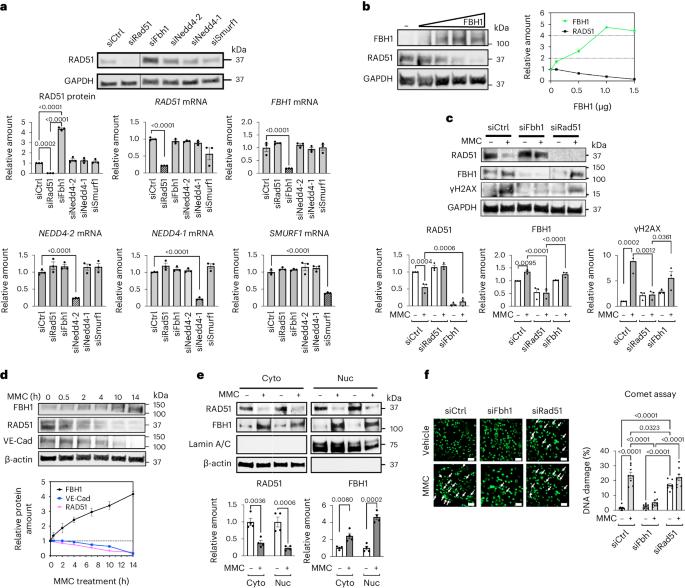Reversal of pulmonary veno-occlusive disease phenotypes by inhibition of the integrated stress response
IF 9.4
Q1 CARDIAC & CARDIOVASCULAR SYSTEMS
引用次数: 0
Abstract
Pulmonary veno-occlusive disease (PVOD) is a rare form of pulmonary hypertension arising from EIF2AK4 gene mutations or mitomycin C (MMC) administration. The lack of effective PVOD therapies is compounded by a limited understanding of the mechanisms driving vascular remodeling in PVOD. Here we show that administration of MMC in rats mediates activation of protein kinase R (PKR) and the integrated stress response (ISR), which leads to the release of the endothelial adhesion molecule vascular endothelial (VE) cadherin (VE-Cad) in complex with RAD51 to the circulation, disruption of endothelial barrier and vascular remodeling. Pharmacological inhibition of PKR or ISR attenuates VE-Cad depletion, elevation of vascular permeability and vascular remodeling instigated by MMC, suggesting potential clinical intervention for PVOD. Finally, the severity of PVOD phenotypes was increased by a heterozygous BMPR2 mutation that truncates the carboxyl tail of the receptor BMPR2, underscoring the role of deregulated bone morphogenetic protein signaling in the development of PVOD. Prabhakar et al. demonstrate in rats with mitomycin C-caused pulmonary veno-occlusive disease activation of protein kinase R (PKR) and the integrated stress response (ISR), leading to the depletion of VE-cadherin and RAD51 from endothelial junctions, endothelial barrier disruption and vascular remodeling. Inhibiting the PKR–ISR axis protects against mitomycin C-induced endothelial damage.

通过抑制综合应激反应逆转肺静脉闭塞症表型
肺静脉闭塞症(PVOD)是一种罕见的肺动脉高压,由 EIF2AK4 基因突变或使用丝裂霉素 C(MMC)引起。由于对肺静脉闭塞症血管重塑的驱动机制了解有限,因此缺乏有效的肺静脉闭塞症疗法。在这里,我们发现给大鼠注射 MMC 会激活蛋白激酶 R(PKR)和综合应激反应(ISR),从而导致血管内皮粘附分子血管内皮(VE)粘附素(VE-Cad)与 RAD51 复合物释放到血液循环中,破坏内皮屏障并导致血管重塑。药理抑制 PKR 或 ISR 可减轻 MMC 引起的 VE-Cad 消耗、血管通透性升高和血管重塑,从而为临床干预 PVOD 提供了可能。最后,杂合子 BMPR2 突变会增加 PVOD 表型的严重性,该突变截断了受体 BMPR2 的羧基尾,强调了骨形态发生蛋白信号传导失调在 PVOD 发病中的作用。Prabhakar 等人在丝裂霉素 C 引起的肺静脉闭塞性疾病的大鼠身上证明了蛋白激酶 R(PKR)和综合应激反应(ISR)的激活,从而导致血管内皮连接处的 VE-cadherin 和 RAD51 消耗、内皮屏障破坏和血管重塑。抑制 PKR-ISR 轴可防止丝裂霉素 C 诱导的内皮损伤。
本文章由计算机程序翻译,如有差异,请以英文原文为准。
求助全文
约1分钟内获得全文
求助全文

 求助内容:
求助内容: 应助结果提醒方式:
应助结果提醒方式:


